Archaeology & History
Rare 17th-Century Paper Cutouts Found Under Floorboards of Tudor House
The paper cutouts, likely created by schoolgirls, will go on display at Sutton House through December.
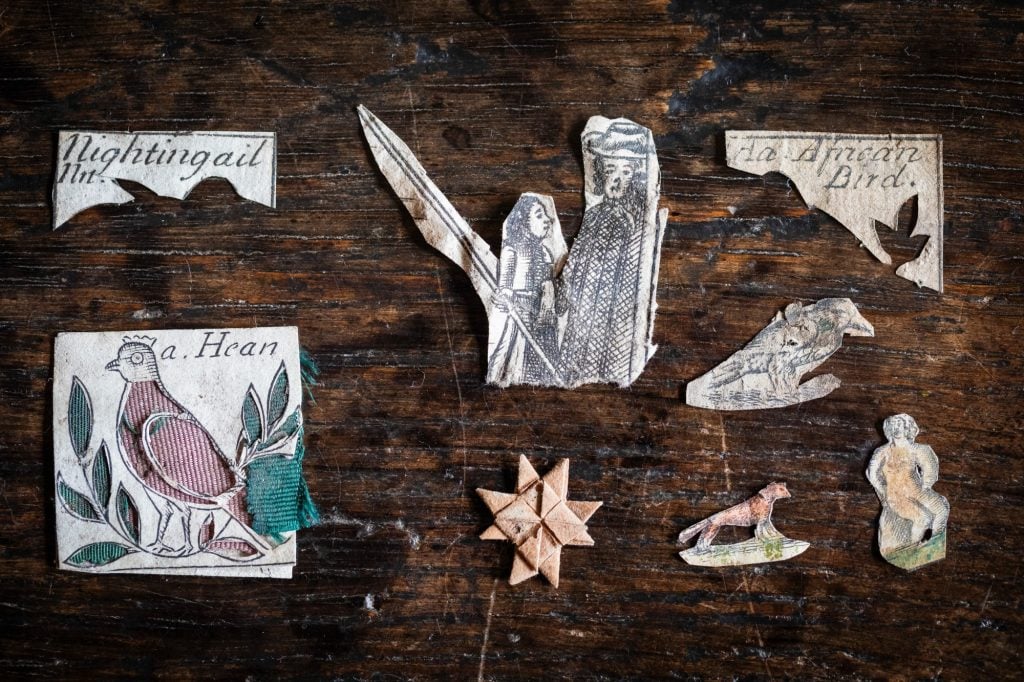
In the late 1980s, local activists were scrambling to protect Sutton House, a 500-year-old Tudor manor house in Hackney, East London. Amid the restoration efforts, workers salvaged hundreds of pieces of ephemera from under the floorboards and stored them into bags. They sat unopened and uncatalogued until last year, when volunteers began sifting through the rubble, textiles, paper, and miscellany looking for treasure.
One discovery was a group of rare paper cutouts created onsite during the period in the 17th century that Sutton House was a school for girls. Eight of these have now gone on display at the National Trust property.
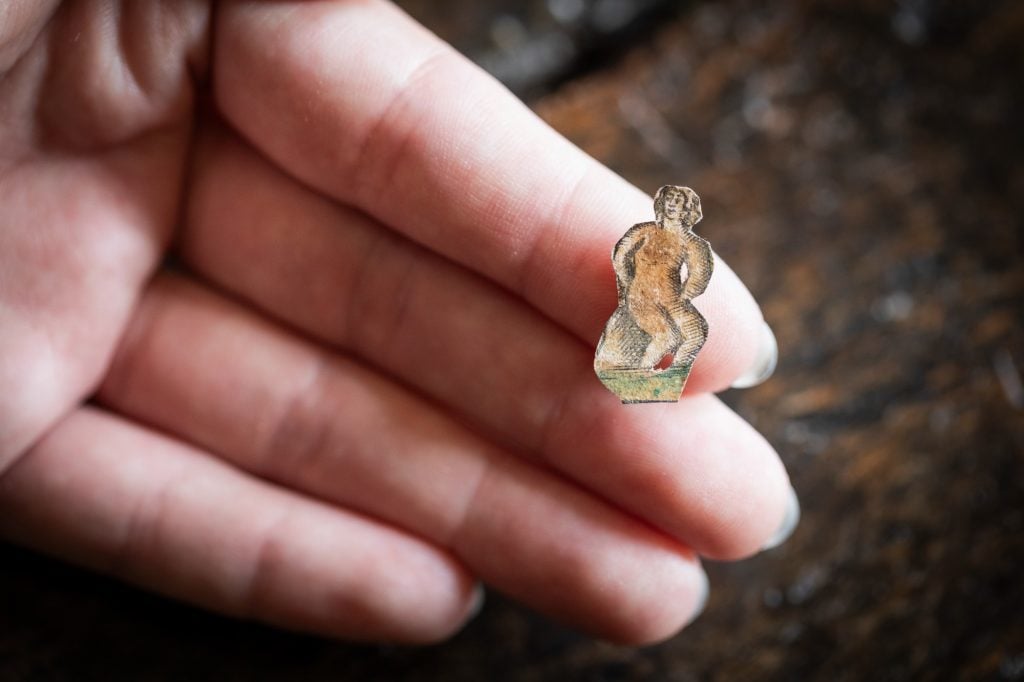
One of the 17th-century paper cutouts. Photo courtesy of National Trust Images – James Dobson.
Measuring only an inch-or so in size, the group includes a hen woven with pink and green silk, an intricate hand-folded star, and a colored in fox. Examples of paper-cutting from this period are rare on account of the fragility of paper and the fact paper-cutting as a pastime was in its infancy 350 years ago.
Paper-cutting was taught to girls alongside reading, writing, housekeeping, music, embroidery, and needlework. It was seen as a means for girls to exhibit their taste and dexterity. It typically involved cutting out designs from books using tiny pairs of scissors, knives, pins, and sometimes a magnifying glass. Cutouts were then hand-colored and used as decorations.
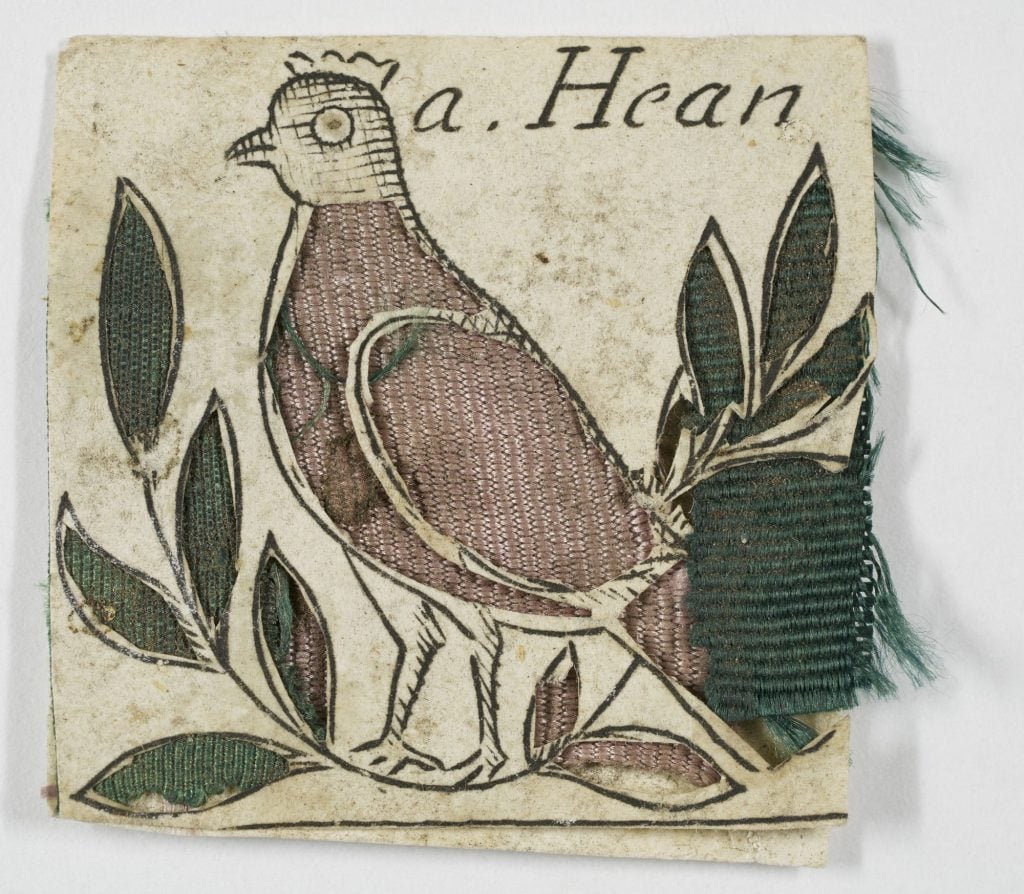
Hen (or Hean) paper cutout. Photo: National Trust – George Eksts.
“We have long known about the role of Sutton House as a girls’ school over its lifetime but with few details about the classes, the pupils, or teaching,” said Kate Simpson, National Trust Senior Collections and House Officer. “This discovery brings to vivid life one of the skills that pupils were taught and the painstaking process of handling, cutting, and coloring such tiny pieces of paper.”
In the mid-17th century, Hackney was a leading site of girls’ education in England with the school at Sutton House established in 1657. It was a boarding school for middle and upper-class girls.
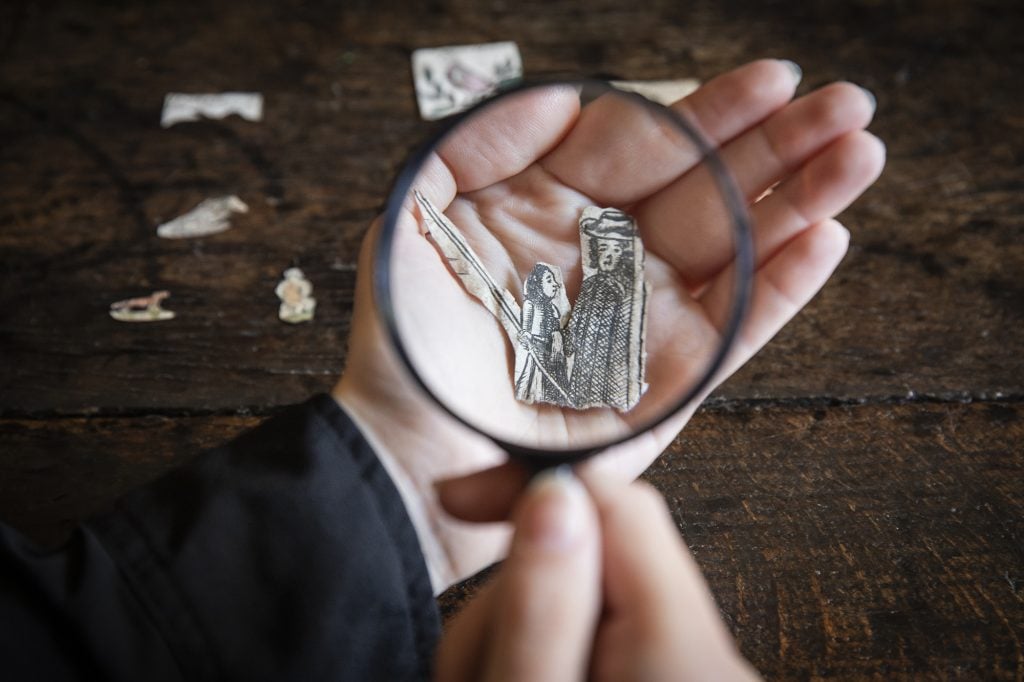
The 17th-century paper cutouts found at Sutton House, U.K. Photo courtesy of National Trust Images – James Dobson.
Curiously, one pioneer of the art of paper-cutting was Hannah Woolley, who published numerous books on household management including A Guide to Ladies (1668) and A Supplement to the Queen-Like Closet (1674). Woolley also established a school in Hackney and historians believe she may have taught at Sutton House after she was widowed.
The paper-cuttings were identified by Isabella Rosner, an expert in early modern material culture, who stated that there are only two other known surviving examples.
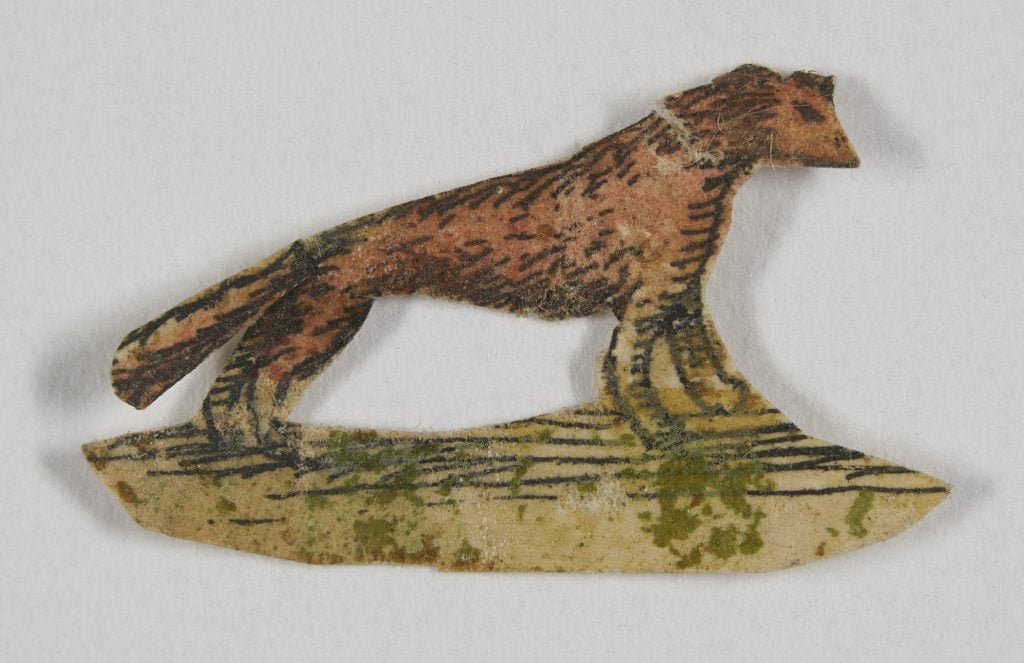
Fox paper cutout. Photo: National Trust – George Eksts.
“The prints found underneath the Sutton House floorboards are hugely exciting, as they give us glimpses into the rich material world of middle and upper-class schoolgirls 350 years ago.”
Originally known as Bryck Place, Sutton House was built in 1535 by a secretary of state to Henry VIII and is the oldest residential building in Hackney. The building was used as a school on-and-off until 1875.





